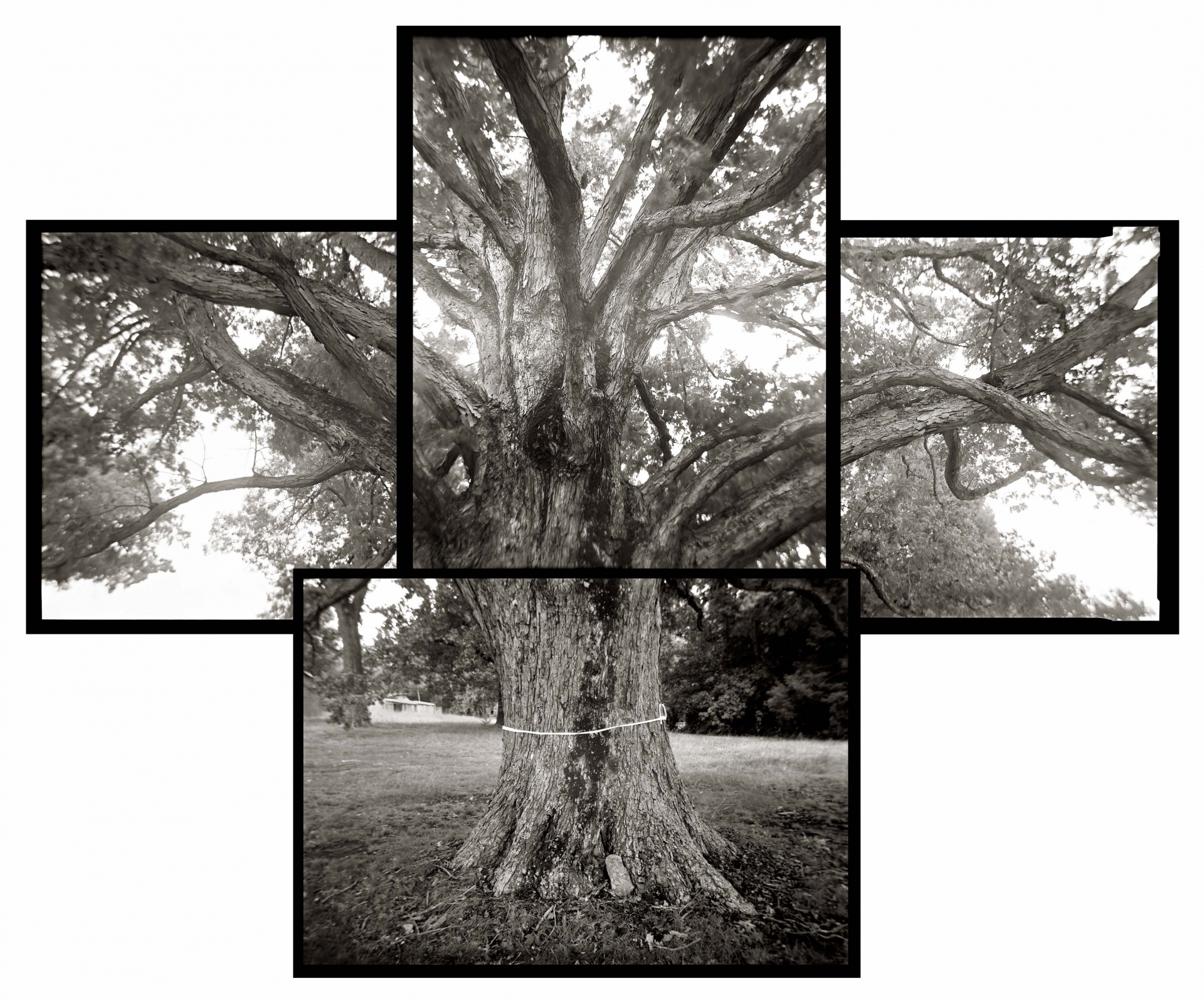Local artist Linda Foard Roberts has exhibited her work internationally from Australia to Guatemala and throughout the United States. Linda began her love of photography at the age of 15. She currently uses 8″ x 10″, 5″ x 7″ and 4″ x 5″ cameras and prefers the imperfections of old lenses. Her work, “Spared,” exhibited in the Projective Eye Gallery for KEEPING WATCH on AIR, is part of a series of tree photographs called “Grounded.”
By Linda Foard Roberts
Growing up I spent many afternoons cradled in the limbs of trees, through languid summers, shaded from the sticky Carolina heat. When I began drawing, at a young age, trees were my favorite models. I loved to imitate them on paper using charcoal or pencil, smudging and stretching the expressive branches across the page, each a portrait of a strong living thing that doesn’t speak but is a quiet witness to the world changing around us.
For over 10 years, I have been photographing trees chronicling the roots I have forged as an appreciation of the landscape where I call home. Through this work the trees are a reflection of ourselves personifying the passing of time, aging and mirroring life. I use 5” x 7” and 8” x 10” view cameras and like the imperfections of old lenses, and the history untold within them.
But trees do so much more for us than provide a romantic notion, exemplifying human experiences, tragedy, triumph and the seasons of life. Their presence and beauty have been shown to reduce violence in neighborhoods in comparison to neighborhoods that are without trees. The shade from their leaves and branches cut down on the energy needed to cool buildings and homes in the summer. Their roots help filter the earth’s water. Their trunk, branches and leaves filter the air around us creating cleaner air. Trees take in carbon dioxide, convert it to food, and release the oxygen for us all to breathe. “In one year, a mature acre of trees can provide enough oxygen for eighteen people”. 1 I find this truly remarkable.
A recent book by Peter Wohlleben, a Forest Ranger, who spent years studying the behavior of trees in the forests of Germany, found that “in nature, trees operate less like individuals and more as communal beings. Working together in networks and sharing resources, they increase their resistance.” Wohlleben also says that trees “can count, learn and remember; nurse sick neighbors; warn each other of danger by sending electrical signals across a fungal network known as the ‘Wood Wide Web’; and, for reasons unknown, keep the ancient stumps of long-felled companions alive for centuries by feeding them a sugar solution through their roots.” 2
It is an honor to be a part of this powerful exhibition and to share my piece Spared.
The property around this powerful, great oak was being prepped for development, and with the white ribbon around its trunk, it appears that it has been spared from the bulldozer. To convey its height and depth, I photographed it with my old 5” x 7” camera, using four negatives, and pieced them back together. I wanted to portray the experience of standing next to such a magnificent, graceful living thing, revering its presence.
The world around us is a better place when trees are surrounding our homes, businesses, and cities. They make the world a better place to live, not only because of their striking beauty and quiet company, but also because of their contributions to our every breath.
